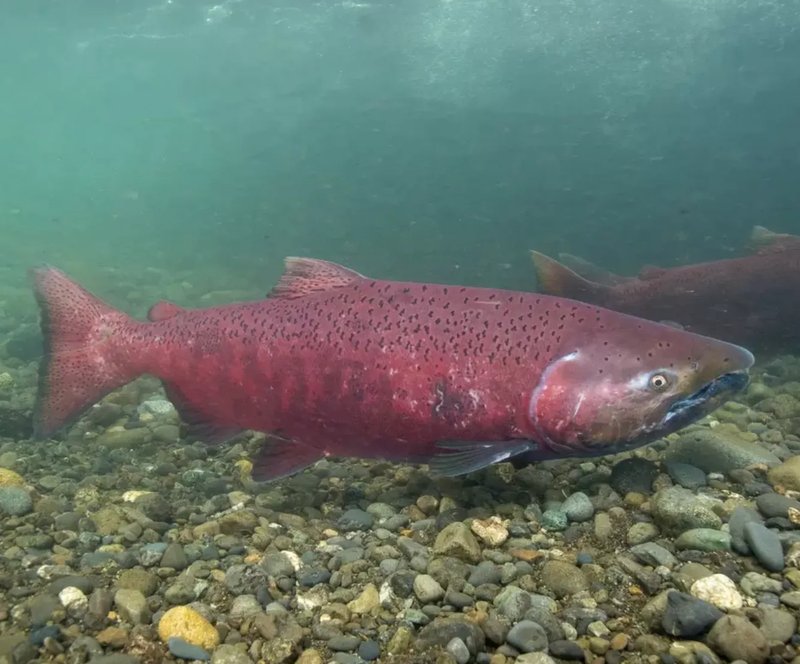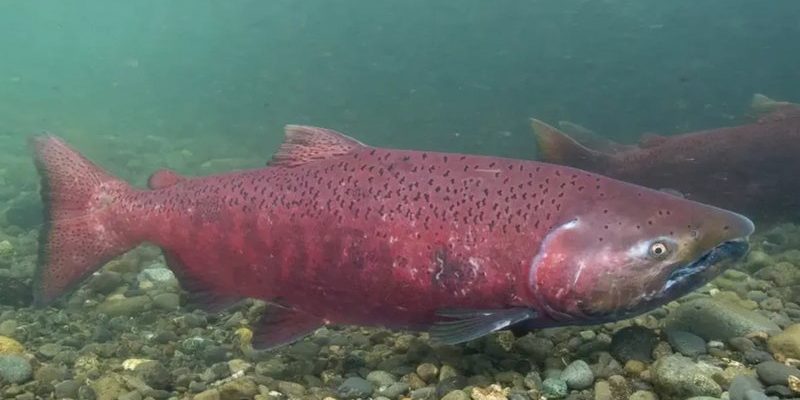
Imagine a bustling river filled with these fish leaping against the current, their silvery bodies flashing in the sunlight. Now, picture that same river slowly drying up, polluted, or filled with barriers that block their path. This isn’t just a poetic image; it’s a reality for many salmon populations across the globe. With numerous factors threatening their survival, understanding the status of salmon can help us appreciate and protect these remarkable animals for generations to come.
Understanding Salmon Species and Their Habitats
There are several salmon species, each with unique characteristics, lives, and habitats. The most recognized types include the Chinook, Coho, Sockeye, Pink, and Atlantic salmon. Each of these species thrives in specific environments, making their habitats key to their survival.
Chinook salmon, for example, can grow to be quite large and often prefer the cool, clean waters of the Pacific Ocean for most of their lives. On the other hand, Atlantic salmon are primarily found in the North Atlantic Ocean and the rivers of North America and Europe. Each species has its unique journey, from spawning upstream in freshwater rivers to maturing in the salty ocean.
Unfortunately, habitat loss is one of the biggest threats to salmon. Urban development, agriculture, and dam construction can disrupt their spawning grounds, making it harder for them to reproduce. As they struggle to find suitable habitats, their populations dwindle. Understanding these species and their specific environments helps conservationists focus their efforts where they’re needed most.
The Causes of Salmon Endangerment
So, what’s putting salmon at risk? Let’s break it down. The challenges they face can often feel overwhelming, but understanding them is an essential part of the solution. A few key factors include:
- Overfishing: Salmon are popular among sports fishermen and commercial fisheries alike. When populations are not carefully managed, overfishing can severely decrease their numbers.
- Pollution: Rivers filled with chemicals, plastics, and other waste can harm salmon. Polluted waters affect their health and the health of their eggs, leading to lower survival rates.
- Climate Change: Rising temperatures can alter river flows, reduce water quality, and change the ecosystems that salmon depend on.
- Habitat Destruction: Construction, logging, and farming often lead to the degradation of critical spawning habitats.
These factors often interact, compounding the risks. For example, pollution may worsen when habitat destruction allows runoff from farms to flow directly into rivers. Addressing these issues is not just about protecting salmon; it’s about maintaining the entire ecosystem they are part of.
Current Conservation Status of Salmon
The conservation status of salmon varies by species and location. Some populations, like the Pacific salmon, are currently facing serious decline, while others show signs of recovery due to concerted conservation efforts. Organizations, governments, and local communities are stepping up to protect these fish and their habitats.
For instance, many areas have implemented fishing regulations to prevent overfishing and allow populations to rebound. Additionally, conservation groups work to restore river habitats by removing barriers like dams and replanting native vegetation along riverbanks. Some places even engage in hatchery programs to help replenish salmon populations.
Despite these efforts, not all species are in the same boat. The Atlantic salmon, in particular, has faced significant declines and is now classified as endangered in many areas. Understanding the varying conservation statuses and pressures on different salmon species is crucial for effective management and recovery efforts.
Success Stories in Salmon Conservation
It’s not all doom and gloom! There are many success stories in salmon conservation that show what’s possible when communities come together. One shining example is the recovery of the Chinook salmon in certain regions of the Pacific Northwest. Thanks to the combined efforts of local tribes, conservationists, and government agencies, river restoration projects have led to healthier habitats and increased salmon populations.
Another success story involves the elimination of certain dams that blocked salmon migration routes. By restoring free-flowing rivers, communities have seen a significant rise in salmon spawning. In some areas, salmon runs that were once thought to be lost have returned, bringing life back to the ecosystems that depend on them.
These successes teach us valuable lessons about resilience and the importance of collaboration. When people work together—whether through scientific research, policy change, or grassroots movements—they can make a real difference for salmon and the environment.
How You Can Help Protect Salmon
You might be thinking, “What can I do to help?” Fortunately, there are many ways you can contribute to salmon conservation efforts, even from your own home. Here are a few simple actions that can make a big impact:
- Educate Yourself: Learn about local salmon species and the specific challenges they face. Understanding the issues is the first step to making a difference.
- Support Clean Water Initiatives: Get involved in or support local efforts aimed at reducing pollution in waterways. Clean rivers benefit not just salmon but the entire ecosystem.
- Participate in Restoration Projects: Many organizations host volunteer days for river clean-ups and habitat restoration. Joining in can help directly improve salmon habitats.
- Advocate for Protective Policies: Support legislation that protects salmon habitats and promotes sustainable fishing practices.
Even small actions can ripple out to create significant change. Just like salmon navigate through rivers despite obstacles, we can all work together to ensure these remarkable fish survive.
The Future of Salmon Conservation
Looking ahead, the future of salmon conservation hinges on our collective responsibility. As challenges like climate change and pollution continue to impact environments, adapting our conservation strategies is essential. Innovative solutions are emerging, such as habitat mapping technology and genetic studies to understand salmon resilience better.
Moreover, engaging local communities plays a crucial role. When people see the value of their local salmon populations—economically, environmentally, and culturally—they’re more likely to support conservation efforts. It’s about fostering a sense of stewardship for these fish and their habitats.
In conclusion, while the situation for salmon can seem precarious, there’s also hope. With ongoing awareness, innovative conservation practices, and community involvement, we have the potential to protect these beautiful fish for future generations. Salmon are more than just a meal on our plates; they are vital components of our ecosystems. By standing up for them, we’re also standing up for our planet.

